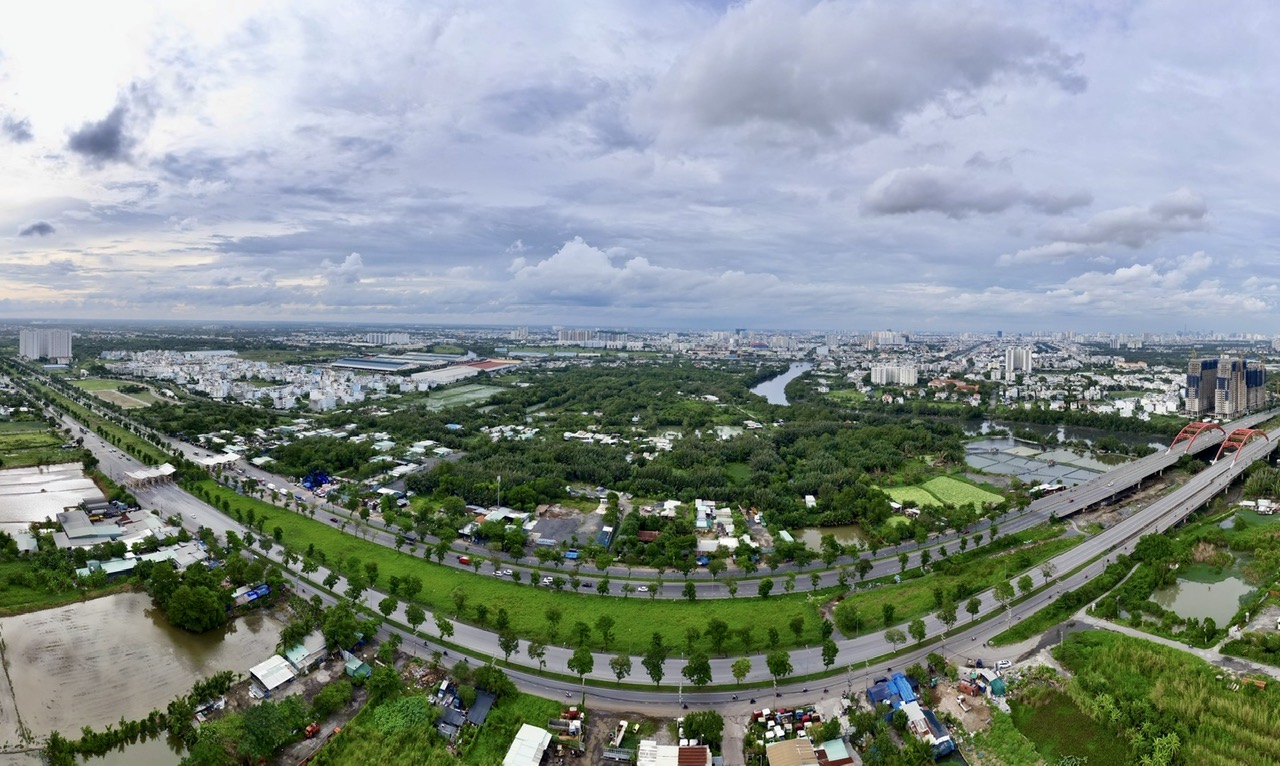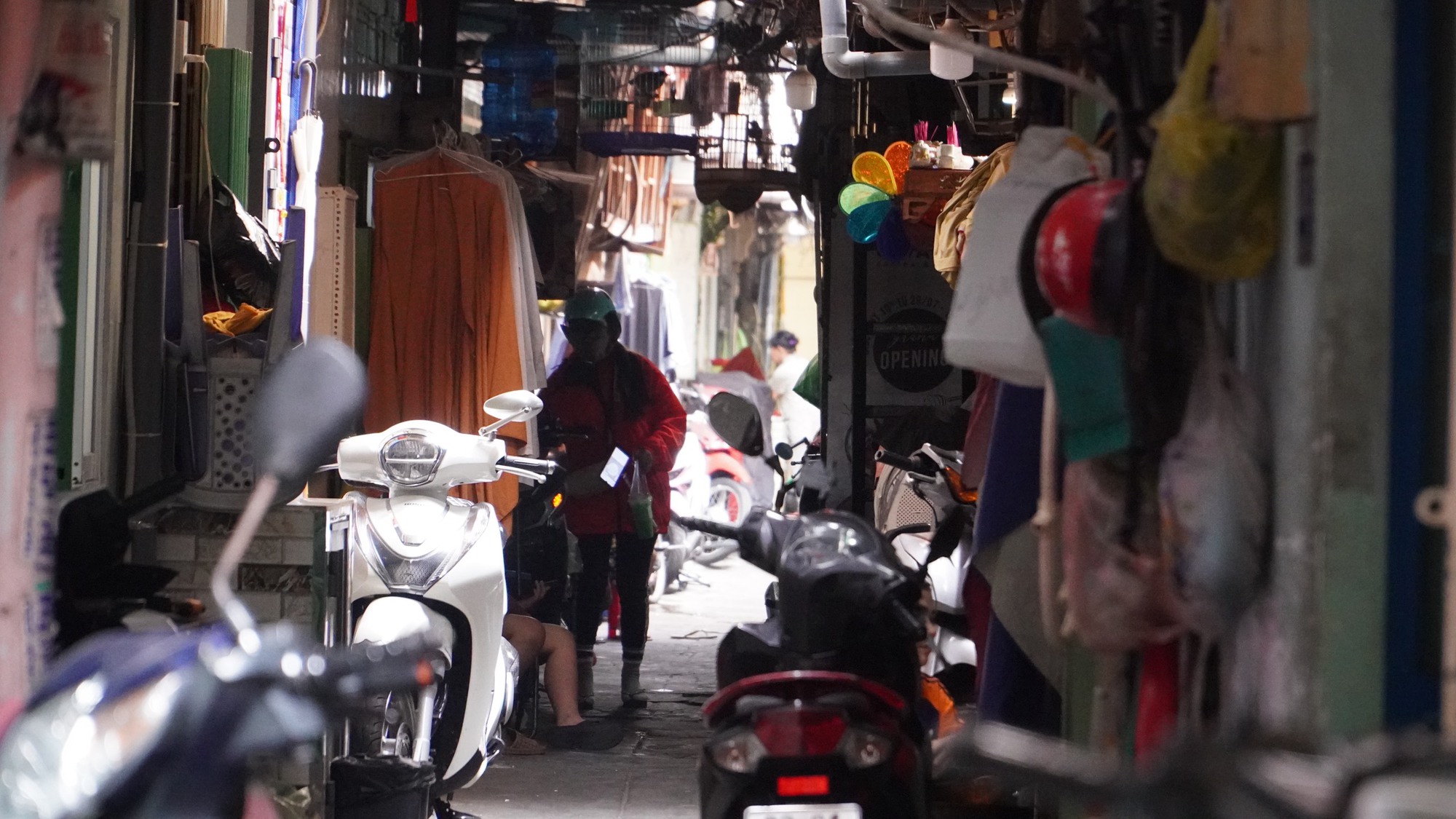Expectations for Urban Highlights
Hồ Chí Minh City, also known as Saigon, has been planning to renovate the Nguyen Cu Trinh area for over 20 years. This urban area, also known as Ma Lang, is located in District 1 and covers 6.8 hectares. Bounded by Nguyen Trai, Cong Quynh, Tran Dinh Xu, and Nguyen Cu Trinh streets, the project aims to improve the city’s urban landscape.
Positive Signals
During the early days of March, we visited Ma Lang, where hundreds of houses with an area of under 20 square meters were in a state of disrepair and deterioration. For years, the residents have been living in small, cramped, and poorly lit spaces, despite being less than 1 kilometer away from the bustling Ben Thanh Market. They have been reluctant to renovate their houses due to uncertainty about when the urban renovation will take place.
“I’ve been hearing about the renovation for over 20 years, with periods of hype followed by silence. I first heard about it when my eldest daughter was still a child, and now she’s in university, yet the relocation has not been implemented,” said Ms. Tran Thi Lan, a resident of the area.
Not far from Ms. Lan’s residence is the house of Ms. Tran Thi Luu. Afraid of the potential relocation, Ms. Luu has refrained from repairing her house, even when it’s leaking during the rainy season. Her house measures only 22 square meters, yet it accommodates 10 family members. While Ms. Luu engages in trading activities, her siblings work as motorbike taxi drivers or dishwashers for hire. The news of upcoming changes brings both joy and worry to Ms. Luu, as she wonders how the resettlement process will be organized and executed.
Heading towards Binh Thanh District, crossing the Kinh Bridge, we arrived at the Thanh Da Peninsula. This area was planned to become an urban district 30 years ago, but due to the city’s inability to attract investors, it has remained untouched and isolated amidst the bustling city. Binh Quoi Street remains a solitary path, leading to the Binh Quoi Ferry Terminal across the river to Thu Duc City. The old, dilapidated houses, nestled among clusters of trees, can only be accessed via narrow winding roads. Many fields have been abandoned, as the local residents cannot cultivate them. The houses in this area have remained largely unchanged for decades due to planning constraints, making it difficult for homeowners to build or renovate.
The news of the Department of Planning and Architecture of Ho Chi Minh City proposing an international competition for planning and architecture ideas for the Binh Quoi – Thanh Da Peninsula has brought excitement to the local community. They hope that the city will soon attract investment, transforming the peninsula into a truly ecological urban area, a “pearl island.”
Moving to the south of the city, numerous projects assigned land over 20 years ago have yet to complete land clearance and begin implementation. This delay has resulted in a lack of synchronized infrastructure and connectivity, causing hardships for local residents. Many old, run-down houses are crowded together, some barely held up with sheets of corrugated iron, tarpaulins, or wooden boards. The residents eagerly anticipate the realization of these projects.

Infrastructure in the south of the city needs significant transformation. Photo: QUOC ANH

The living space of residents in the Ma Lang area is expected to change soon. Photo: ANH VU
Waiting for Change
Recently, during a working session with local authorities, Ms. Hoang Thi To Nga, Deputy Secretary of District 1, requested the city to promptly seek new investors with sufficient capacity to carry out the urban renovation project in the Ma Lang area, ensuring that residents can stabilize their living conditions.
According to Ms. Le Thi Huynh Mai, Director of the Department of Planning and Investment of Ho Chi Minh City, the Ma Lang area has faced various challenges for a long time. The previous project was withdrawn, and the city is currently undergoing the process of new bidding procedures. The Department of Planning and Investment will coordinate with other relevant departments and units to promptly carry out bidding, investment, and urban renovation activities in the area.
Regarding the Binh Quoi – Thanh Da New Urban Area project, the Department of Planning and Architecture of Ho Chi Minh City acknowledges the lengthy research and investment attraction efforts. However, due to the project’s large scale, high total investment, and complex land clearance and compensation procedures, the project has been delayed for many years. This delay has deeply impacted the lives and legitimate rights of thousands of households.
Mr. Nguyen Thanh Nha, Director of the Department of Planning and Architecture of Ho Chi Minh City, stated that a proposal regarding the approval of the international planning and architecture idea contest for the Binh Quoi – Thanh Da Peninsula has been submitted to the People’s Committee of Ho Chi Minh City. Furthermore, the People’s Committee of Ho Chi Minh City wishes to include additional content in the proposal, so the department is currently revising the proposal for approval. The contest is expected to last for 45 to 60 days. The department has also advised the People’s Committee of Ho Chi Minh City to direct the Department of Finance to find suitable funding sources to increase the value of the prizes, attracting renowned world-class entities to participate and propose innovative ideas.
Regarding the southern part of the city, Mr. Duong Thanh Cong, Deputy Head of the Management Board of Investment and Construction of the Southern Urban Area of Ho Chi Minh City, stated that their agency is currently reviewing and consolidating the opinions of various departments and sectors. Subsequently, they will report to and seek guidance from the People’s Committee of Ho Chi Minh City on the review of 12 projects that have not completed land clearance and faced delays in implementation.
Mr. Cong also emphasized the need for their agency to efficiently provide recommendations to expedite the process of investor selection, land clearance, and project implementation to improve the infrastructure of the southern part of the city.
Note: This article was written by Business Today and rephrased for clarity and understanding. For more information on finance and economics, visit Business Today.
Quote from TS Nguyen Huu Nguyen – Urban Development Planning Association of Ho Chi Minh City:
“One of the advantages of the Ma Lang urban renovation project is the large number of state-owned houses in the area. This addresses the most important issue of resettling residents. The challenges in the Ma Lang urban renovation project can be resolved by the city. The city can identify specific difficulties and apply Resolution 98/2023 of the National Assembly to speed up the project. This includes utilizing the superior mechanisms stated in Resolution 98 and using on-site resettlement land.”
Quote from TS Vo Kim Cuong – Former Deputy Chief Architect of Ho Chi Minh City:
“The Binh Quoi – Thanh Da Peninsula should not be developed as a high-density mixed-use area. Instead, part of the land should be allocated to create an ecological peninsula, which is attractive and unique, linked to the river and water. Organizing an international planning and architecture idea contest for the Binh Quoi – Thanh Da Peninsula is a positive step towards facilitating investment attraction. The contest should be associated with investors because when they propose planning ideas, they will be determined to invest.”
Writer: T. Hong
Quote from TS Nguyen Huu Nguyen – Urban Development Planning Association of Ho Chi Minh City:
“The application of superior mechanisms is one of the advantages of the Ma Lang urban renovation project. The area has a large number of state-owned houses, which solves the most important issue of resettling residents. The challenges faced in the Ma Lang urban renovation project can be resolved by the city. The city can identify specific difficulties and apply Resolution 98/2023 of the National Assembly to speed up the project. This includes utilizing the superior mechanisms stated in Resolution 98 and using on-site resettlement land.”
Quote from TS Vo Kim Cuong – Former Deputy Chief Architect of Ho Chi Minh City:
“In my opinion, the Binh Quoi – Thanh Da Peninsula should not be developed as a high-density mixed-use area. Instead, part of the land should be allocated to create an ecological peninsula, which is attractive and unique, linked to the river and water. Organizing an international planning and architecture idea contest for the Binh Quoi – Thanh Da Peninsula is a positive step towards facilitating investment attraction. The contest should be associated with investors because when they propose planning ideas, they will be determined to invest.”
Writer: Quoc Bao
